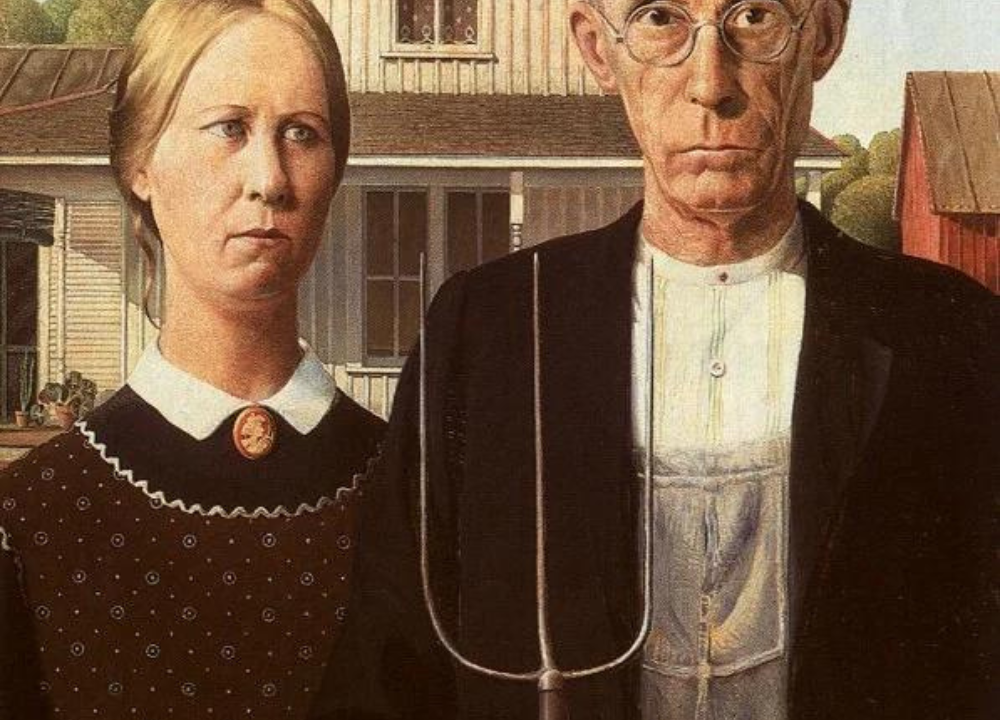Art is much more than just a form of entertainment; it’s a powerful tool for culture, expression, and change. You will discover how art shapes your community and influences your beliefs. You’ll learn how it reflects your values and challenges the status quo.
By understanding the impact of art, you’ll see how it connects people and sparks important conversations. Stay with us as we explore the vital role of art in your life and society as a whole. You might just find a new appreciation for the creativity that surrounds you.
Art As A Mirror And Memory Of Culture
Art plays a crucial role in society. It reflects our culture, expresses ideas, and drives change. One key aspect is how art acts as a mirror and memory of culture. It captures the essence of who we are and where we come from. Through various forms, art tells stories and preserves traditions. It provides insight into our collective experiences and emotions.
Reflecting Societal Values
Art often mirrors the values and beliefs of a society. It showcases what people care about and what they aspire to be. Through different mediums, artists express their views on social issues, politics, and human experiences. This reflection helps to:
- Raise awareness about important topics.
- Challenge norms and provoke thought.
- Encourage dialogue among community members.
For example, street art frequently comments on social justice. It brings attention to inequality and inspires change. Many famous artworks highlight cultural pride and identity. They serve as a reminder of shared values.
Here are some examples of art reflecting societal values:
| Art Form | Societal Issue | Artist |
|---|---|---|
| Graffiti | Social Justice | Banksy |
| Paintings | Identity | Frida Kahlo |
| Photography | War and Peace | James Nachtwey |
Through these reflections, art not only entertains but also informs. It acts as a catalyst for change, helping society to evolve.
Documenting History & Heritage
Art also plays a vital role in documenting history and heritage. It captures moments that define a culture. From ancient cave paintings to modern installations, art preserves our past. This documentation allows future generations to learn about their roots.
Many artworks serve as historical records. They provide insight into daily life, traditions, and events. Important cultural shifts and milestones are often reflected in art. For instance:
- Ancient sculptures tell stories of gods and heroes.
- Folk art showcases local traditions and customs.
- War memorials honor those who served.
Art can also highlight forgotten histories. It gives voice to marginalized communities. By showcasing diverse perspectives, art enriches our understanding of the past.
Here are some ways art documents history:
| Art Type | Purpose | Example |
|---|---|---|
| Murals | Community History | Chicano Park, San Diego |
| Photographs | Social Movements | March on Washington |
| Traditional Crafts | Cultural Identity | Native American Pottery |
Through documenting history, art connects us to our heritage. It ensures that we remember and honor our past.
Art As A Powerful Medium Of Expression
Among its many roles, art serves as a powerful medium of expression. It allows individuals to communicate feelings, ideas, and experiences. Through various forms, such as painting, music, and dance, art transcends language barriers. It connects people across different backgrounds. Art enables us to share our stories and understand others. This section explores how art expresses emotions and facilitates connections.
Giving Voice To Emotion & Thought
Art provides a unique way to express emotions and thoughts. It captures feelings that words often cannot. Artists convey deep emotions through their work. This can be seen in various art forms:
- Visual Art: Paintings and sculptures can evoke feelings of joy, sadness, or anger.
- Music: Songs can express love, loss, or hope, resonating deeply with listeners.
- Theater: Plays often explore complex human emotions and societal issues.
Many artists use their work to express personal experiences. For instance, a painter may illustrate their struggle with mental health. This creates a dialogue about important issues. Here is a table showing how different art forms express emotions:
| Art Form | Emotion Expressed | Example |
|---|---|---|
| Painting | Melancholy | “The Scream” by Edvard Munch |
| Music | Joy | “Happy” by Pharrell Williams |
| Theater | Conflict | “Hamlet” by Shakespeare |
Through these expressions, art becomes a powerful tool. It connects individuals to their emotions. It encourages reflection and understanding. This connection fosters empathy and awareness. Art can inspire change by highlighting societal issues.

Facilitating Dialogue & Connection
Art is a bridge that connects people. It facilitates dialogue about important topics. Different cultures express their values and beliefs through art. This creates opportunities for conversation. Art can challenge assumptions and open minds. It encourages viewers to think critically.
- Community Art Projects: These projects bring people together. They promote collaboration and understanding.
- Exhibitions: Art shows often spark discussions about culture and identity.
- Public Installations: These create shared experiences in public spaces.
Art can also address social issues. It invites dialogue on topics like inequality, justice, and freedom. Artists often reflect the struggles of their communities. Through their work, they invite others to share their stories. This creates a sense of belonging. Here are some ways art facilitates connection:
- Encourages shared experiences.
- Promotes understanding across cultures.
- Inspires community engagement.
Art helps us explore diverse perspectives. It invites us to listen and learn from each other. In this way, art becomes a catalyst for connection and change.
Art As A Catalyst For Social Change
Through various forms, art gives a voice to the voiceless. It challenges what is accepted and inspires people to act. Artists often highlight issues in society that need attention. This role of art as a catalyst for social change is crucial for progress.
Challenging Norms & Injustice
Art has the power to challenge accepted norms and expose injustice. Artists use their work to question the status quo. Through paintings, music, or performances, they create conversations about difficult topics. This can lead to greater awareness and understanding.
- Art can highlight social issues like poverty, racism, and inequality.
- It gives a voice to marginalized communities.
- Art pieces can spark debates and discussions.
Many artists have faced backlash for their work. Yet, this does not stop them. Instead, it fuels their passion. They understand that change often comes from discomfort. Below is a table showing notable artists and their impactful works:
| Artist | Work | Issue Addressed |
|---|---|---|
| Pablo Picasso | Guernica | War and Suffering |
| Banksy | Girl with a Balloon | Hope and Refugees |
| Frida Kahlo | The Two Fridas | Identity and Gender |
These works show how art can confront difficult truths. They challenge viewers to reflect on their beliefs and actions. The impact of art in this way is profound.
Inspiring Action & Movements
Art does not just challenge; it also inspires action. Many movements have used art to rally support. Music, posters, and performance art have mobilized people for change.
- Art raises awareness of social issues.
- It motivates people to participate in movements.
- Art can unify diverse groups toward a common goal.
For example, during the civil rights movement, music played a vital role. Songs like “We Shall Overcome” became anthems for change. They inspired people to join protests and demand justice. Below are key movements influenced by art:
| Movement | Art Form | Impact |
|---|---|---|
| Civil Rights Movement | Music | Unifying Protest Songs |
| Feminist Movement | Visual Art | Awareness of Gender Issues |
| Environmental Movement | Installations | Highlighting Climate Change |
These examples illustrate how art inspires collective action. It provides a platform for voices that need to be heard. Art moves people to act and creates lasting change.
Art’s Impact On Individual Well-being
Beyond its societal influence, art profoundly impacts individual well-being. Engaging with art can uplift spirits, enhance mental health, and inspire personal growth. Whether through creating or appreciating art, individuals often find solace, joy, and clarity in their lives.
Fostering Mental & Emotional Health
Art serves as a powerful tool for mental and emotional health. It provides an outlet for feelings and thoughts. Engaging with art can help reduce stress and anxiety. Many people find comfort in creating or viewing art. This engagement can lead to:
- Improved mood: Colors and forms can lift spirits.
- Stress relief: Creative activities offer a break from daily worries.
- Enhanced self-expression: Art lets individuals share their inner feelings.
Studies show that art therapy helps people cope with various mental health issues. It encourages self-exploration and healing. Here’s a quick overview:
| Type of Art | Benefits |
|---|---|
| Visual Arts | Encourages creativity and relaxation. |
| Music | Boosts mood and reduces anxiety. |
| Dance | Improves physical health and emotional well-being. |
Art not only aids personal healing but also connects individuals to others. Sharing art experiences fosters community and belonging.
Promoting Personal Growth & Self-discovery
Art encourages personal growth and self-discovery. It pushes individuals to explore their thoughts and emotions. Creating or experiencing art can lead to new insights and perspectives. Here are some ways art promotes growth:
- Exploration of identity: Art helps people understand themselves better.
- Increased confidence: Completing an art project boosts self-esteem.
- Emotional intelligence: Engaging with art enhances empathy and understanding.
Through art, individuals often confront their fears and desires. This process can be transformative. Here’s a simple breakdown:
- Choose an art form that interests you.
- Set aside time for regular practice.
- Reflect on your feelings during and after creating.
Art becomes a mirror, reflecting inner thoughts and feelings. It guides individuals on their journey of self-discovery. Each brushstroke, note, or movement reveals something new about oneself.
Art As A Tool For Education And Learning
One powerful aspect of art is its ability to educate. Art as a tool for education and learning can enhance understanding and foster critical thinking. Through various art forms, students can grasp complex ideas. They can connect with emotions and learn in a dynamic way. Art opens doors to new perspectives and knowledge.
Enhancing Cognitive Skills
Art education significantly boosts cognitive skills. Engaging with art helps the brain develop in unique ways. It encourages observation, analysis, and interpretation.
Some cognitive skills enhanced by art include:
- Critical Thinking: Analyzing artwork fosters deeper understanding.
- Problem-Solving: Creating art involves overcoming challenges.
- Memory: Remembering details improves through visual art.
- Focus: Concentrating on art tasks builds attention span.
Studies show that children engaged in art perform better in subjects like math and science. They learn to approach problems creatively. Here’s a quick overview of cognitive benefits from art:
| Cognitive Skill | Art Activity | Benefit |
|---|---|---|
| Critical Thinking | Art critique | Improved analysis |
| Problem-Solving | Creating sculptures | Enhanced creativity |
| Memory | Painting | Better recall |
| Focus | Drawing | Increased attention |
Cultivating Creativity & Innovation
Art plays a key role in cultivating creativity and innovation. It encourages individuals to express themselves freely. This freedom leads to fresh ideas and unique solutions.
Art education nurtures creativity through various methods:
- Exploration: Students experiment with different mediums.
- Collaboration: Group projects inspire teamwork and sharing ideas.
- Imagination: Engaging with art stimulates original thought.
Creative skills learned through art apply to all areas of life. Here are some examples:
- Art encourages innovative thinking in business.
- Creative skills help in science and technology.
- Art promotes new approaches to everyday challenges.
By cultivating creativity, art prepares students for the future. They become problem solvers and critical thinkers. This foundation fosters a society that values innovation.




